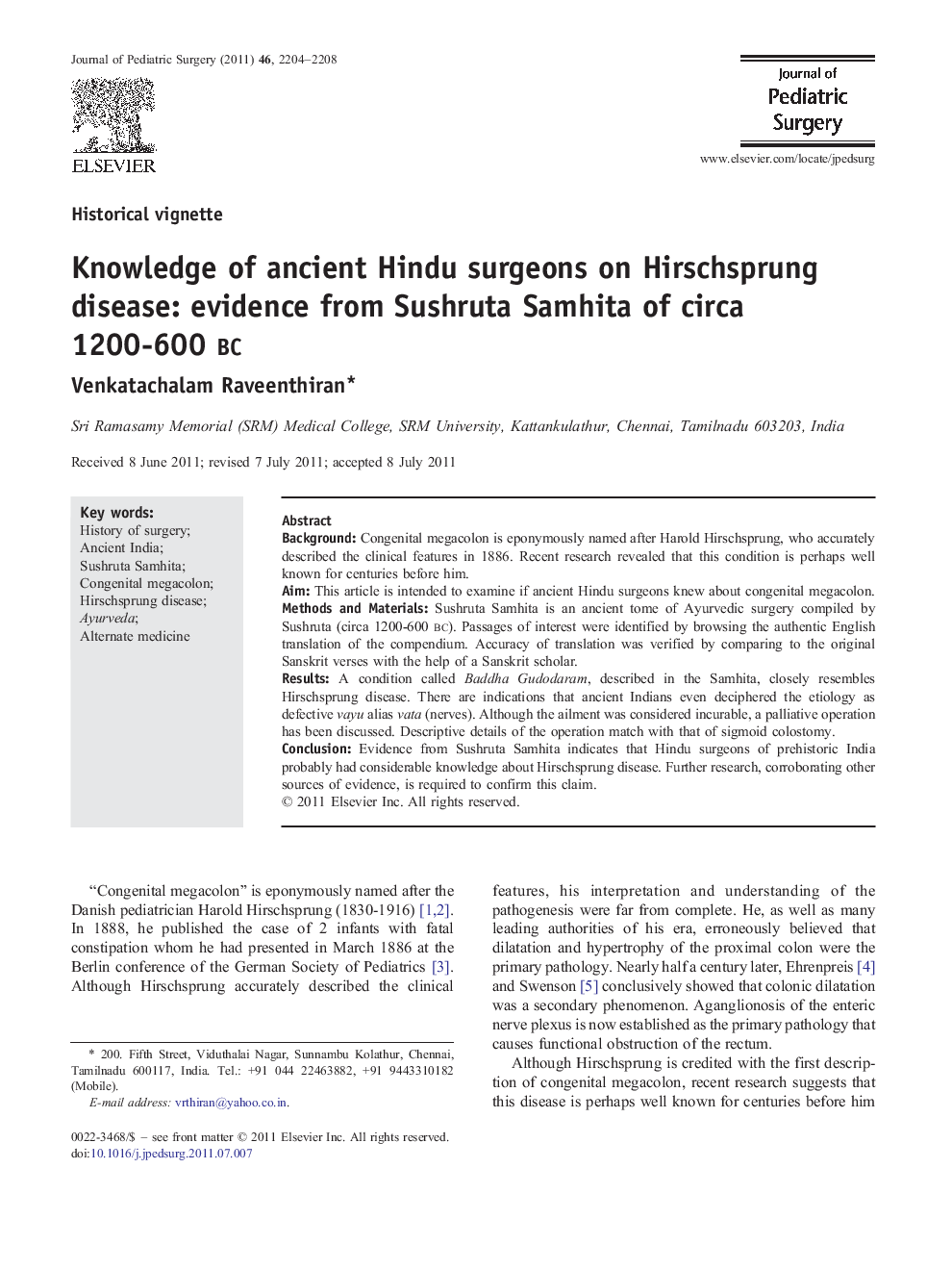| کد مقاله | کد نشریه | سال انتشار | مقاله انگلیسی | نسخه تمام متن |
|---|---|---|---|---|
| 4157036 | 1273785 | 2011 | 5 صفحه PDF | دانلود رایگان |

BackgroundCongenital megacolon is eponymously named after Harold Hirschsprung, who accurately described the clinical features in 1886. Recent research revealed that this condition is perhaps well known for centuries before him.AimThis article is intended to examine if ancient Hindu surgeons knew about congenital megacolon.Methods and MaterialsSushruta Samhita is an ancient tome of Ayurvedic surgery compiled by Sushruta (circa 1200-600 bc). Passages of interest were identified by browsing the authentic English translation of the compendium. Accuracy of translation was verified by comparing to the original Sanskrit verses with the help of a Sanskrit scholar.ResultsA condition called Baddha Gudodaram, described in the Samhita, closely resembles Hirschsprung disease. There are indications that ancient Indians even deciphered the etiology as defective vayu alias vata (nerves). Although the ailment was considered incurable, a palliative operation has been discussed. Descriptive details of the operation match with that of sigmoid colostomy.ConclusionEvidence from Sushruta Samhita indicates that Hindu surgeons of prehistoric India probably had considerable knowledge about Hirschsprung disease. Further research, corroborating other sources of evidence, is required to confirm this claim.
Journal: Journal of Pediatric Surgery - Volume 46, Issue 11, November 2011, Pages 2204–2208